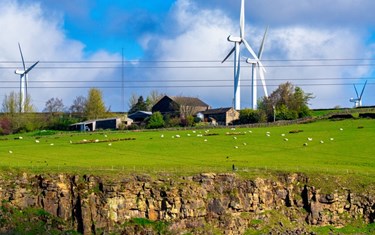Question 1: What is your opinion of the proposal to set the 2035 target for the combined supply of thermal energy supplied from heat networks to "at least 7 TWh" of output?
RTPI Scotland accepts the rationale set out for this target.
Question 2: Are there particular considerations in setting this target that may help to reduce the depth and/or rate of fuel poverty?
Fuel poverty results from a myriad of factors including low income, high fuel prices, poor energy efficiency, unaffordable housing prices and poor quality private rental housing. Addressing these issues resulting from fuel poverty requires a coherent, joined-up and place-based approach. RTPI Scotland see the planning system as fundamental in orchestrating such approaches and should hold a pivotal role in enabling the delivery of heat networks and aligning them with wider regeneration efforts to maximise the benefit of interventions. This includes other policy ambitions associated with regeneration such as Community Wealth Building and inclusive growth.
Question 3: Are there any other issues that you would like to highlight in relation to the 2035 heat network target?
RTPI Scotland supports the updated and expanded policy on heat and cooling set out in the recently adopted National Planning Framework 4. Policy 19 requires alignment with the area’s Local Heat and Energy Efficiency Strategy, that proposals should be designed to connect with existing or future heat networks, and where there is no effective solution available, an alternative low or zero emissions heating system be provided. We await the final publication of Local Development Plan guidance and regulations in Spring which we hope provides clarity on how LHEES are to be integrated into the spatial plan preparation process.
However, the Institute wishes to highlight the resource intensive nature of such requirements and the current lack of resources, skills and knowledge within the public sector on energy related planning matters, especially in terms of assessing district heating feasibility proposals. This should be seen in the context of years of disinvestment in the planning service with research from RTPI research[1] showing that:
- The planning service is the one of the most severely affected of all local government services in terms of budgets with a reduction of 38% since 2010;
- A quarter of planning department staff have been cut since 2009;
- Planning application fees do not cover the costs of processing planning applications;
- The new Planning Act has introduced 49 unfunded duties to local authorities which could cost between £12.1m and £59.1m over 10 years to implement;
- It is estimated that over the next 10 to 15 years the planning sector will have demand for an additional 680 - 730 entrants into the sector; and
- The planning workforce has both demographic and succession challenges in the short, medium and long term
Central to achieving low and zero carbon heat project delivery will be a holistic approach driven by effective partnership working, skills and information sharing, meaningful community engagement and a thorough understanding of spatial opportunities and constraints across sectors. Therefore, RTPI Scotland supports the role of Heat Networks Partnerships (HNPs) for co-ordinating support across the built environment professions and will form an important delivery vehicle for this policy.
[1] https://www.rtpi.org.uk/research/2022/december/resourcing-the-planning-service-key-trends-and-findings-2022/


